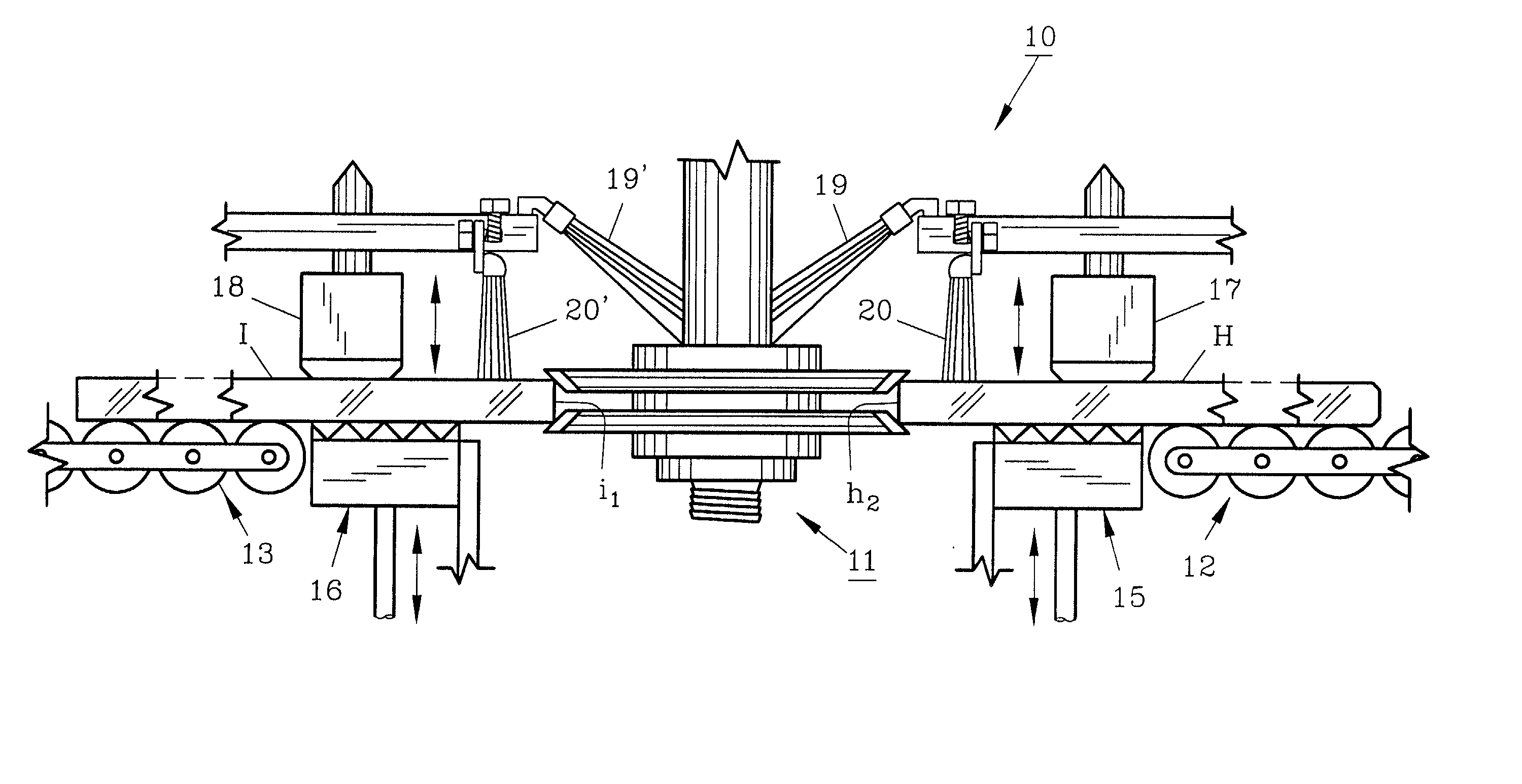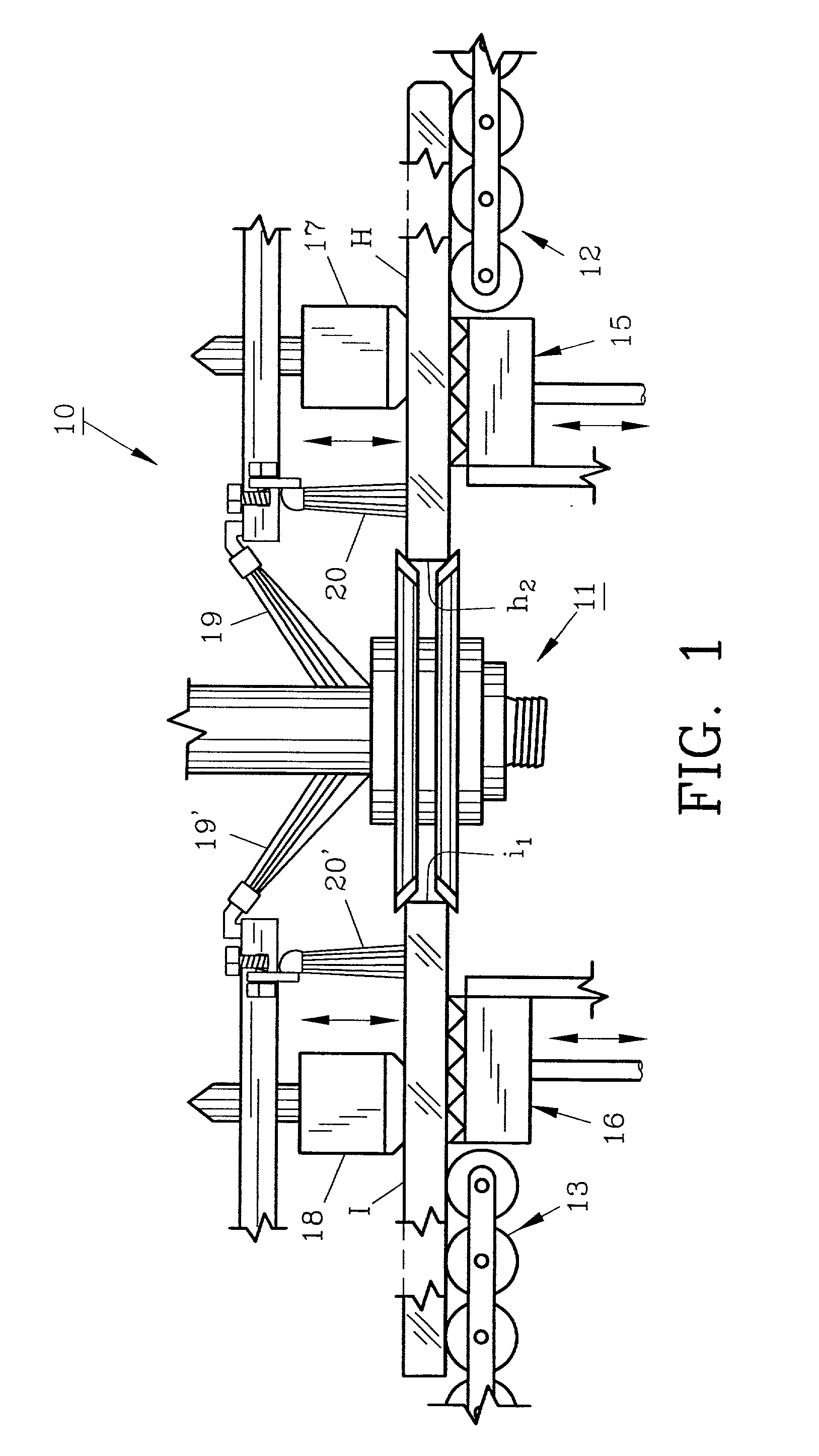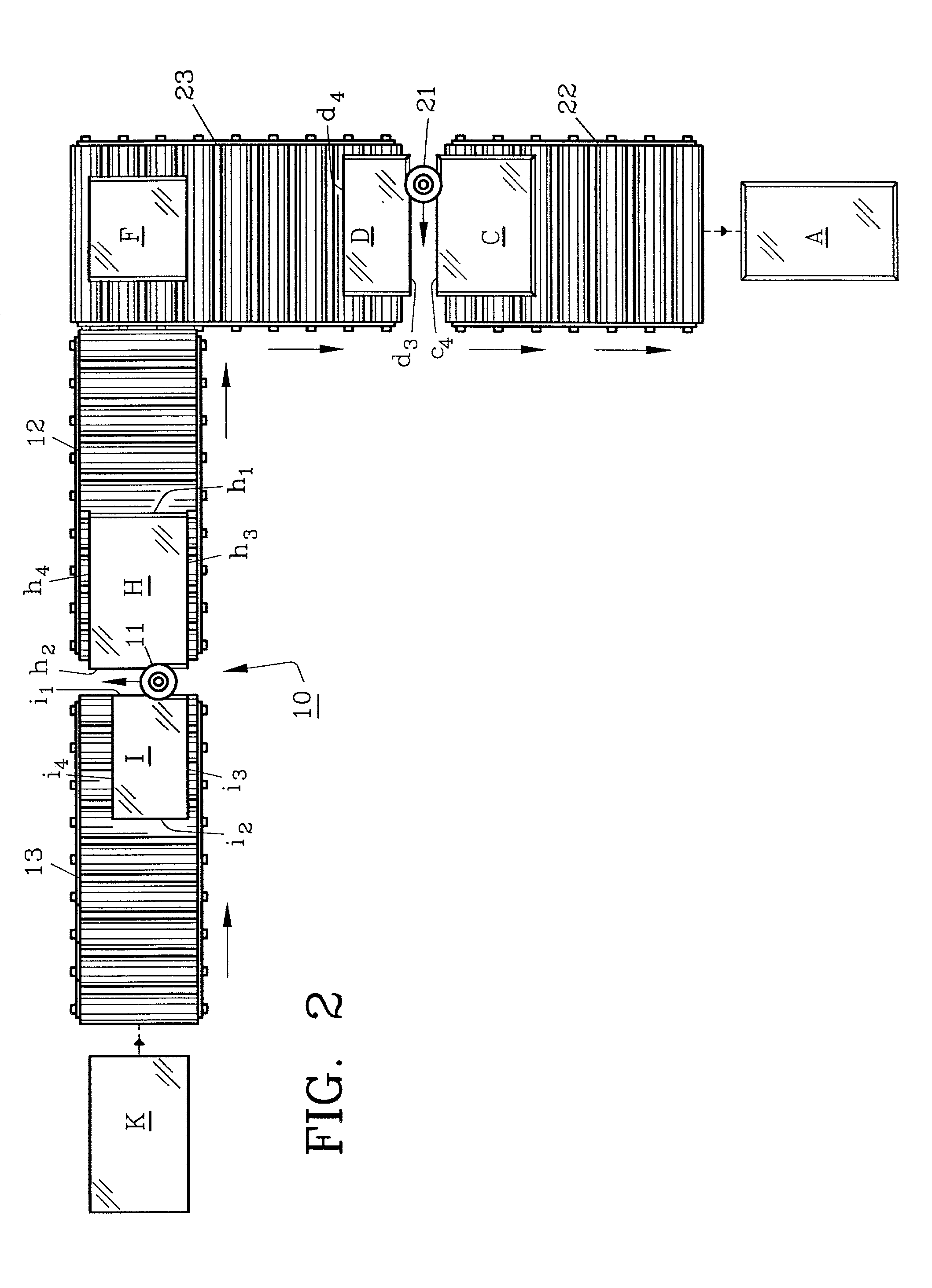Apparatus for grinding rigid materials
a technology of rigid materials and apparatuses, which is applied in the direction of edge grinding machines, grinding machine components, manufacturing tools, etc., can solve the problems of high rejection rate, time-consuming and inaccurate techniques and methods presently employed, and requiring precise adjustments for the particular size and thickness of glass processed, etc., to achieve rapid and accurate production
- Summary
- Abstract
- Description
- Claims
- Application Information
AI Technical Summary
Benefits of technology
Problems solved by technology
Method used
Image
Examples
Embodiment Construction
[0022] Turning now to the drawings, preferred apparatus 10 of the invention is shown in FIG. 1 wherein conventional grinding wheel 11 is shown positioned between first rigid planar material H and second rigid planar material I. Planar materials H and I are for example rectangular sheets of plate glass in horizontal alignment (seen in fragmented fashion in FIG. 1 for clarity) although other material such as ceramic tile, stone or other materials may be likewise processed. Grinding wheel 11 is moving along materials H and I simultaneously abrading or grinding the lateral trailing edge h.sub.2 of material H and the lateral leading edge i.sub.1 of material I. Apparatus 10 as shown in FIG. 1 consists of standard abrasive diamond grinding wheel 11, first roller conveyor 12 and second roller conveyor 13. At each end of conveyors 12 and 13 respectively as seen, lower bottom clamps 15 and 16 are positioned to hold rigid materials H and I with upper clamps 17, 18 as conventional in the indust...
PUM
| Property | Measurement | Unit |
|---|---|---|
| degree angles | aaaaa | aaaaa |
| size | aaaaa | aaaaa |
| abrasive size | aaaaa | aaaaa |
Abstract
Description
Claims
Application Information
 Login to View More
Login to View More - R&D
- Intellectual Property
- Life Sciences
- Materials
- Tech Scout
- Unparalleled Data Quality
- Higher Quality Content
- 60% Fewer Hallucinations
Browse by: Latest US Patents, China's latest patents, Technical Efficacy Thesaurus, Application Domain, Technology Topic, Popular Technical Reports.
© 2025 PatSnap. All rights reserved.Legal|Privacy policy|Modern Slavery Act Transparency Statement|Sitemap|About US| Contact US: help@patsnap.com



